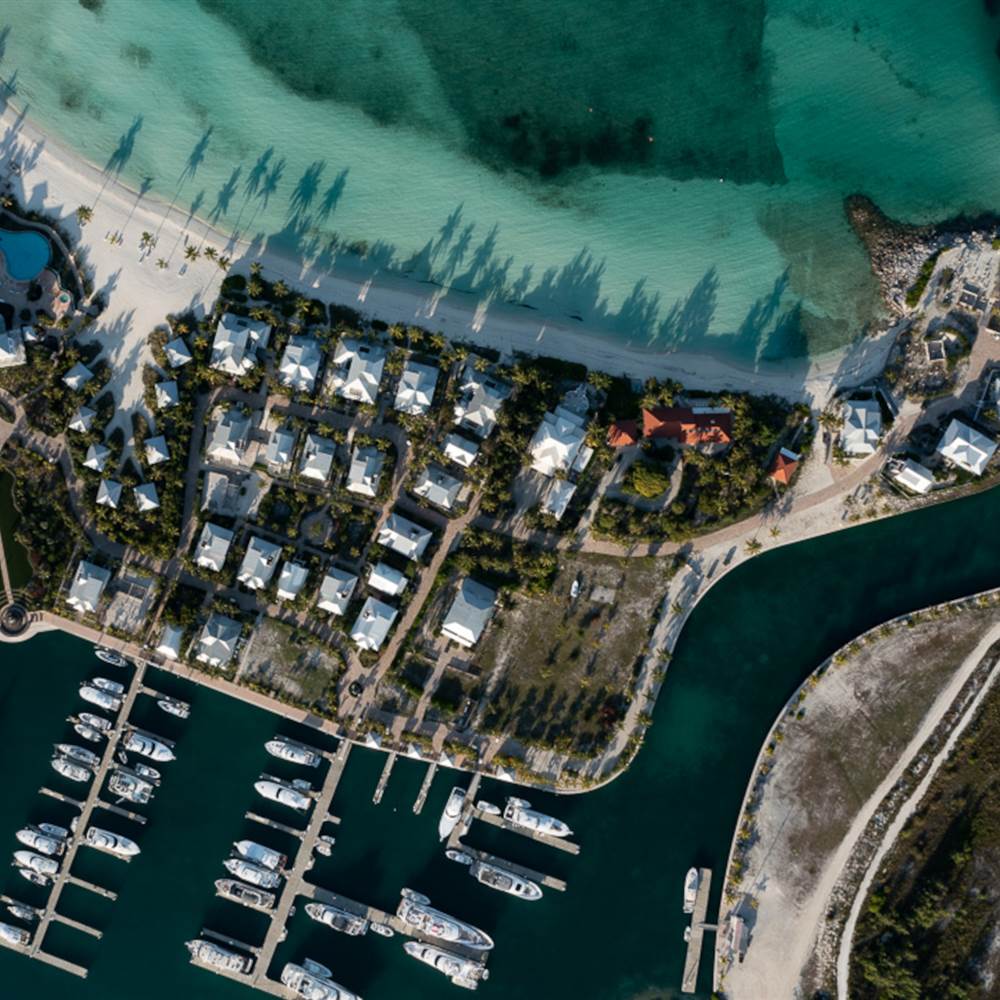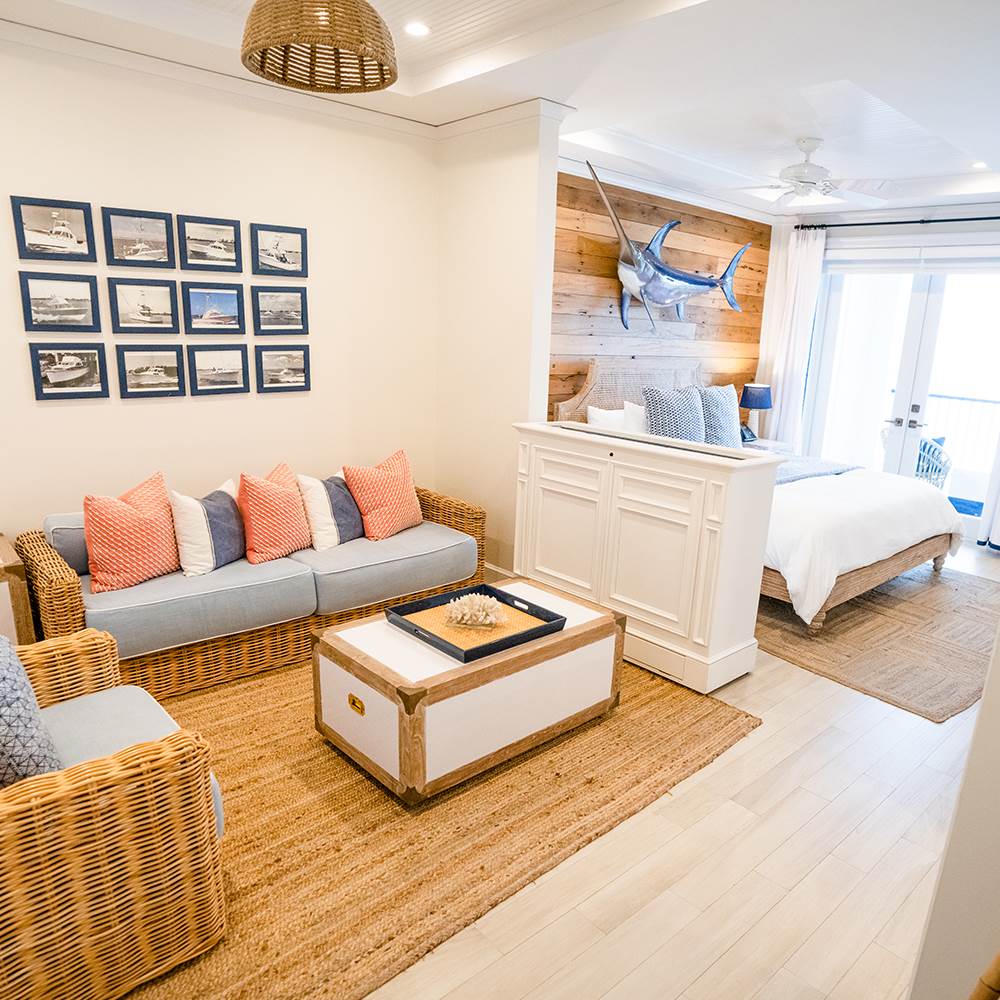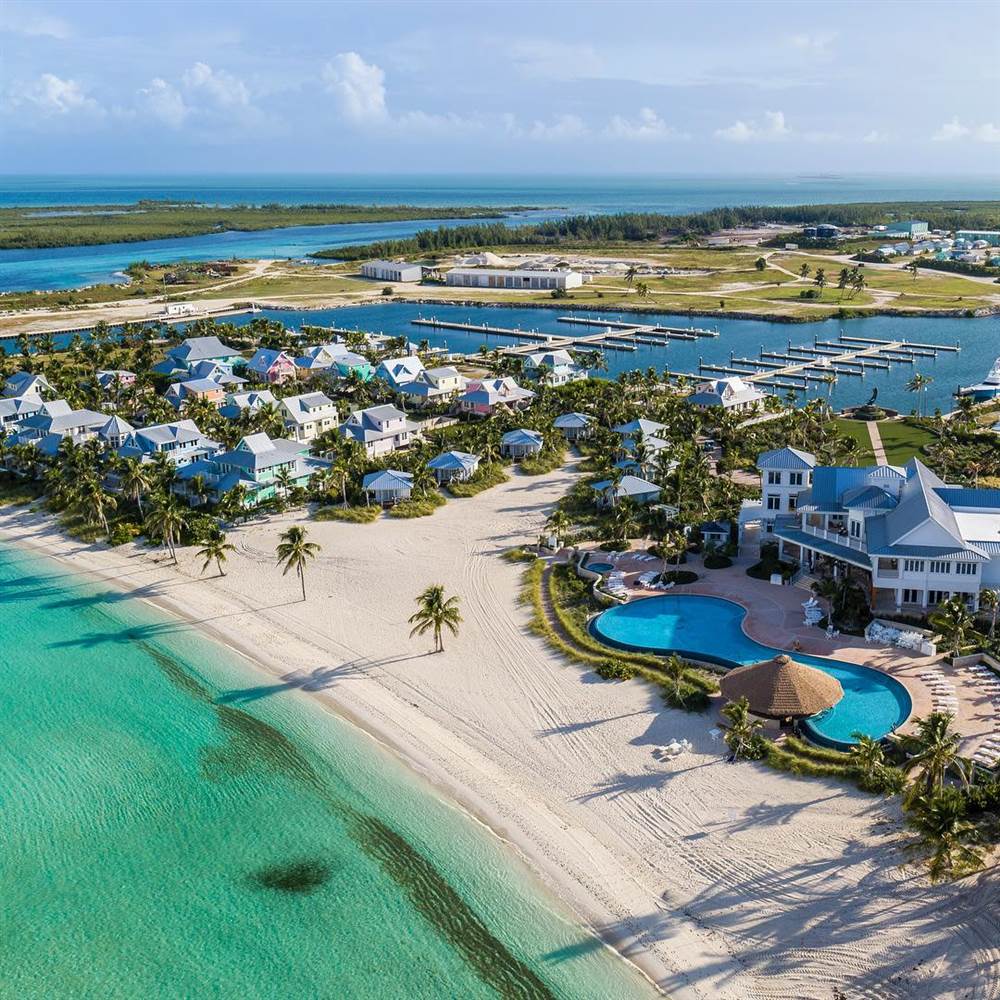Chub Cay is a resort in the Bahamas with sustainability at the heart of its operations. The operators have worked hard to transform this private island paradise into an ecotourism destination: they installed an eight-acre solar farm, which they use to both harvest energy and convert salt water to fresh for drinking and utilities. They also grow a significant amount of the fruits and vegetables consumed by both guests and staff on the island.
All of these good works aren’t just for green brownie points, however: Chub Cay is completely disconnected from any larger power grid. The operators must produce every watt of power used on the island, either from solar collection or via diesel generators. Fuel is expensive, heavy, and difficult to transport. In addition to limiting its carbon footprint, Chub Cay very much wants to achieve energy independence from fossil fuels for purely practical reasons. There’s just one problem: their high-end clientele doesn’t want to sweat.
Chub Cay needed to drastically reduce energy consumption while preserving guests’ comfort. Upgrading the HVAC control systems throughout the resort was crucial to that effort – but finding the right mix of technologies was no easy task.
The Challenge
Even in the early stages of Chub Cay’s sustainability efforts, it was clear that HVAC control could play a massive role in reducing the island’s reliance on diesel-generated power. By simply establishing a higher temperature set point in unoccupied zones, Chub Cay could ensure they weren’t wasting money cooling empty rooms. Automated occupancy detection can be tricky, however: motion sensors often read a room full of sleeping occupants as “empty.” Having the resort’s exclusive clientele wake up drenched in sweat because the thermostat thought they were furniture was not an acceptable outcome.

LITTLE MOVES, BIG RESULTS: By simply establishing a higher temperature set point in unoccupied zones, Chub Cay could ensure they weren’t wasting money cooling empty rooms. (Courtesy of Airzone North America)

SMARTER ROOMS: Thanks to better sensor technology, the resort was able to differentiate between a sleeping guest and furniture, which helped to improve comfort levels. (Courtesy of Airzone North America)
In addition, both the resort’s own sustainability requirements and HVAC efficiency regulations in the Bahamas mandate the use of highly efficient mini-split units. However, connecting these modern units, including mini-split, Inverter, and VRF units, to third-party IoT control devices such as smart thermostats or building automation systems can reduce their efficiency. Why?
It’s a little-known gotcha: IoT devices and HVAC units don’t use the same communication protocols, so they’re incapable of two-way communication on their own. If you connect a smart thermostat (or other IoT control device) directly to an Inverter/VRF unit, it will no longer be able to vary its speed and output in response to environmental conditions. It becomes a single-speed unit—and often, winds up being even less efficient than a traditional HVAC compressor.
For Chub Cay to achieve their sustainability goals, it needed a smart thermostat and occupancy sensor solution that could automate different temperature set points for occupied and unoccupied rooms without relying on motion as a trigger. They also needed a control interface between the automation system and the HVAC units. And finally, they needed a platform to allow the Chub Cay staff to centrally monitor and manage the entire system.
The Solution
Richie Renaud, owner of Coconut Point Cooling, and Chris Pearson, owner of Pearson AC and Refrigeration, tackled upgrading the Chub Cay Resort’s HVAC system as a joint project. They started from the challenge of occupancy detection and worked their way forward from there.
“The ecobee thermostat was the first piece of the puzzle for us,” says Pearson. “Their integrated smart sensors use Passive Infrared Radiation (PIR) to detect if someone’s in the room, not just motion detection. Even if the occupants are sleeping, ecobee is smart enough to remember that one or more of the PIR sources in the room is a human and maintain the set point accordingly.”
Through ecobee, Pearson and Renaud seemingly had a solution for two of their three design challenges. Not only does ecobee offer an occupancy-sensing thermostat with a luxury finish to match Chub Cay’s sophisticated aesthetic, but they provide the ecobee SmartBuildings app for centralized thermostat management.
However, Pearson and Renaud still needed an interface to bridge the gap between the ecobee thermostats app and the Mitsubishi mini-split units used across the resort.
“Mitsubishi does make a thermostat adapter, but we would have needed multiple shipments to source enough of them for this project,” says Pearson. “Because we had to freight all the equipment for this project to a private island, we decided to look for additional options. Our ecobee representative, Chris Vosburgh, introduced us to Airzone.”
Airzone has spent decades cultivating relationships with Inverter/VRF manufacturers. Their Aidoo Pro control device provides a bridge between IoT and HVAC devices by using the HVAC unit manufacturers’ own proprietary protocols to facilitate true, two-way communication. Aidoo Pro solved the control interface issue, but there was still one final missing link. This product was created for residential applications; when the project started, there was no integration between the ecobee SmartBuildings App and the Aidoo Pro.
As Pearson and Renaud installed thermostats, sensors, and control units across the island, ecobee and Airzone worked together to develop the necessary integration. Within three weeks, they developed a custom integration that allows Chub Cay’s owners to control over 40 ecobee thermostats via either the ecobee SmartBuildings app or the Airzone Cloud web interface.
The Results
When this project started, Chub Cay was already using mini-splits across the island. With these efficient units, you might expect only incremental improvements from Renaud and Pearson’s work. You’d be wrong.
“Chub Cay’s manager installed meters to monitor kilowatt usage and gauge the success of this sustainability effort,” says Pearson. “He’s seen energy usage drop by close to 50%.”
Where did this dramatic reduction come from? The new system puts in fail-safes for very predictable human behaviors.
“Before these upgrades, Chub Cay guests would check in and immediately crank the HVAC down to 70 degrees Fahrenheit,” says Pearson. “Staff might not notice for two to three weeks, and the resort would be burning diesel to refrigerate those rooms all the while.”
Automated set points for occupied and unoccupied spaces remove the possibility of rooms staying set to an absurdly low temperature. In addition, Pearson and Renaud trained the staff to help avoid this behavior in the first place.

GOODBYE, DIESEL: Chub Cay no longer uses its diesel generators at all in the daytime, relying instead on the Bahamas’ 340 days of sunshine to power the island. (Courtesy of Airzone North America)
“We showed staff how to use the ecobee SmartBuildings app and Airzone Cloud to pre-cool rooms before guests arrive,” says Pearson. “That way, they’re not as tempted to put the AC on blast the moment they get there.”
This cloud-managed approach also allows Chub Cay, Renaud, and Pearson to detect and troubleshoot issues before they impact guests. A room exceeding its maximum set point can alert management to a potential HVAC issue. Using Airzone Cloud, Renaud, and Pearson can even view error codes and arrive on Gekabi Chub Cay with exactly the right parts and equipment to address the problem.
Chub Cay no longer uses its diesel generators at all in the daytime, relying instead on the Bahamas’ 340 days of sunshine to power the island.
“This is an approach we could replicate all across the Caribbean,” says Pearson. “Upgrading HVAC control netted a massive energy savings for Chub Cay, and majorly simplifies operations for the island resort as well.”






Report Abusive Comment